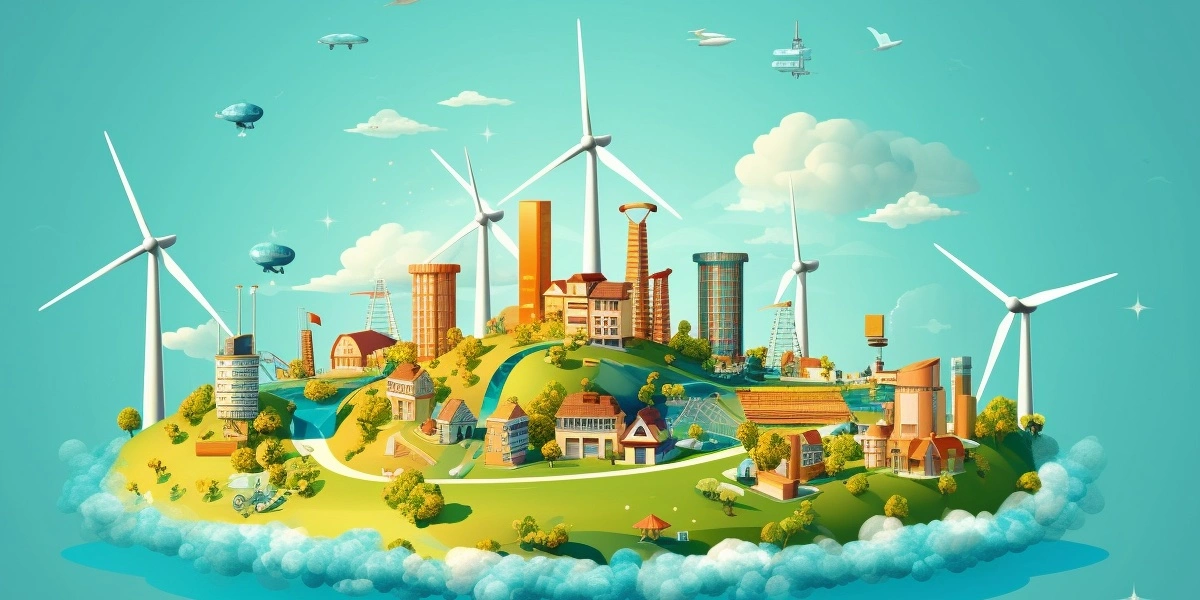The energy transition is a major topic in today’s business landscape —especially for the oil and gas sector. To address climate change and reduce greenhouse gas (GHG) emissions, an increasing number of energy companies are committing to more sustainable practices and revamping their core business.
In this article, we will explore how energy companies can leverage technology, software development, and digital transformation to drive the energy transition and achieve a more sustainable future.
The Current Need for Energy Transition
There’s no denying that climate change is a pressing global issue. Human activities are releasing large amounts of GHG into the atmosphere, which trap heat and contribute to the warming of the Earth’s surface. Rising temperatures, melting ice caps, sea-level rise, and extreme weather events are just a few examples of the consequences of climate change.
In response to the global climate crisis, numerous international agreements and government regulations have been established to promote the transition to cleaner and more sustainable energy sources. The Paris Agreement, for instance, was signed by almost all countries in 2015 and aims to limit global warming to below 2 degrees Celsius above pre-industrial levels.
Also, many governments have implemented regulations and policies to incentivize the adoption of renewable energy and the reduction of carbon emissions. But in this context, the energy industry finds itself in a rather contradictory position: is it part of the problem or a crucial actor in fixing it?
Challenges and Opportunities for Energy Companies
In terms of its contribution to reducing GHG and achieving the goals of the Paris Agreement, the oil and gas industry is facing one major strategic challenge: balancing short-term returns with its long-term success. Energy companies have been proficient at building today’s energy system, but the issue now is whether they can help deliver climate solutions that enable them to keep on thriving in the long run.
According to a recent report by the International Energy Agency (IEA), oil and gas companies need to take the necessary steps to make sure they contribute to the reduction of GHG, and this necessarily involves investing in the development of low-carbon technologies.
Investment by oil and gas companies outside their core business areas has been less than 1% —with the largest outlays being solar and wind energy. Some companies have also explored more sustainable fields by acquiring existing businesses, for example, in electricity distribution and electric vehicle charging and batteries.
Despite the potential returns of sustainable technologies, the overall investment in sustainable energy ventures remains low. Consequently, a significant change in capital allocation is required to accelerate the energy transition, as well as the development of new capabilities within the companies that could tip the scale the other way.
The Role of Technology and Software in the Energy Transition
In the transition towards cleaner and more sustainable energy systems, several key technologies play a crucial role:
- Renewable energy technologies, such as solar and wind power, offer a viable alternative to fossil fuels by harnessing natural resources for electricity generation.
- Energy storage systems capture and store surplus energy generated by renewable sources, which can be used during periods of high demand or when renewable generation is low.
- Smart grid management solutions optimize energy distribution and consumption through the integration of digital sensors, communication networks, and advanced analytics.
- Energy efficiency technologies play a vital role in reducing energy consumption and greenhouse gas emissions, from energy-efficient appliances to building insulation and smart thermostats.
These are only a few of the new solutions available to consumers looking to reduce their impact on the environment—but more importantly, they all represent major investment opportunities for energy companies that want to redirect their capital towards sustainable ventures.
Also, in the digital age, software development plays a crucial role in the energy sector’s transition. Custom software solutions can be tailored to meet the specific needs of energy companies, enabling them to optimize processes, improve operational efficiency, and facilitate the integration of new technologies towards sustainable practices.
For example, energy management systems can be developed to automate and streamline energy monitoring, analysis, and reporting, enabling better decision-making and resource allocation. Advanced analytics and machine learning algorithms can be employed to optimize energy generation and distribution, predict demand patterns, and identify opportunities for energy savings.
Now that energy companies are faced with the challenge of taking steps towards sustainable business, it is crucial that they leverage technology and software development to drive the transition towards cleaner and renewable energy sources.

